Stunning High-Def Jupiter Images Released By NASA Look Like Art Work
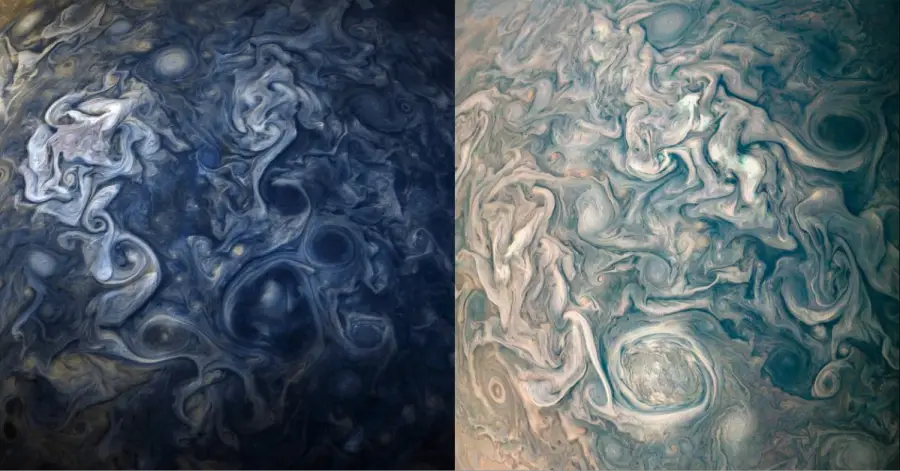
NASA have published a never-before-seen array of breathtakingly stunning images of planet Jupiter as captured by their Juno spacecraft.
NASA believe that unlocking the secrets of Jupiter will shed light on how the solar system came into existence.
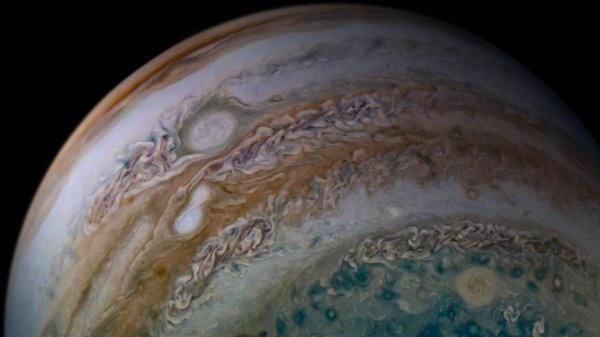
Storms Merging
“Juno will let us take a giant step forward in our understanding of how giant planets form and the role these titans played in putting together the rest of the solar system,” read a statement on NASA’s website.
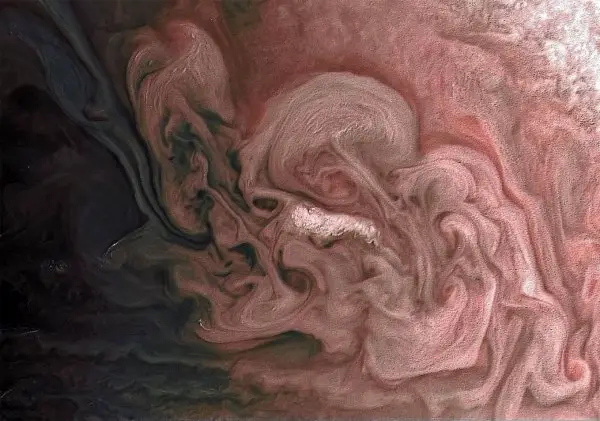
“Juno’s principal goal is to understand the origin and evolution of Jupiter. Underneath its dense cloud cover, Jupiter safeguards secrets to the fundamental processes and conditions that governed our solar system during its formation.”
Juno’s Jupiter mission timeline
The spacecraft was launched on August 5, 2011 as part of the New Frontiers program. It reached Jupiter in July 2016 and is currently orbiting the planet.
Happening now: I’m passing low over the cloud tops of Jupiter, as simulated here by the @nasa_eyes visualization. Current speed relative to Jupiter: 128,000 mph (206,000 kilometers per hour) and rising. Get the latest mission news at https://t.co/Y5VKDxs8yM. pic.twitter.com/1WnPR10Z1j
— NASA's Juno Mission (@NASAJuno) April 10, 2020
Juno is planned to orbit around Jupiter for 41 months. NASA have set the end of the mission for July 2021.
The fifth planet from the Sun, Jupiter is the largest in the Solar System – two-and-a-half times all the other planets combined. It has 79 moons.
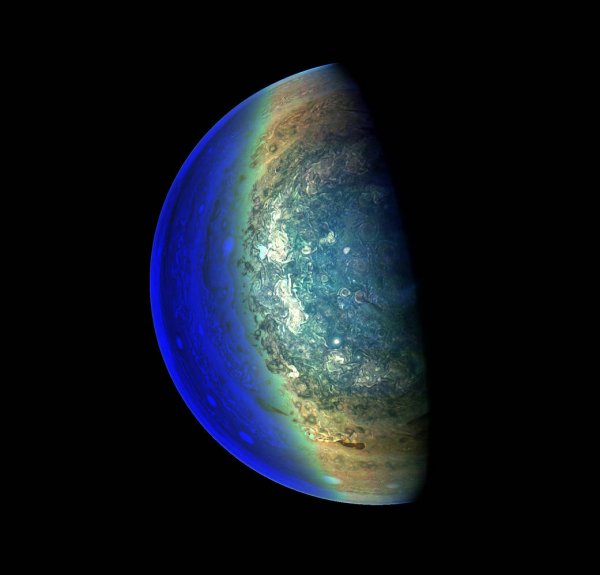
Cloud formations around the south pole
Jupiter lacks a well-defined solid surface and is made up primarily of hydrogen, as well as helium and other heavier elements in its rocky core.
Read more: Comet Last Viewed In Ancient Egyptian Times Is Heading Closer to Earth
What is Juno’s purpose?
Researchers are interested to find out how much water is in Jupiter’s atmosphere. They also want to measure the atmosphere for composition, temperature and cloud motions.
With an vast array of instruments on board Juno, scientists will also be checking for the presence of a solid planetary core and will map out Jupiter’s magnetic field and observe the presence of auroras.
Jupiter’s average distance from earth is around 770 million km.
Pic credits: NASA
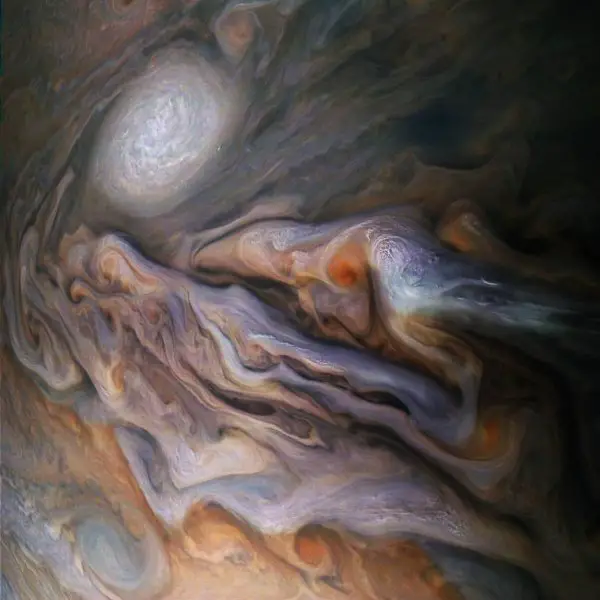
Swirling clouds around Jupiter’s North Temperate Belt
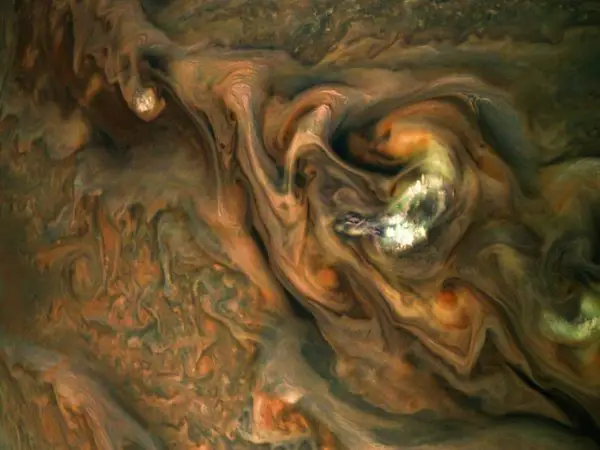
Intricate jet stream patterns in Jupiter’s northern hemisphere
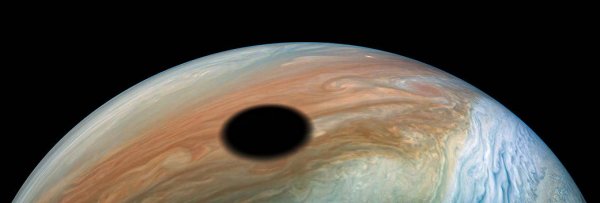
A shadow cast from Jupiter’s volcanically active moon, Io, one of 79
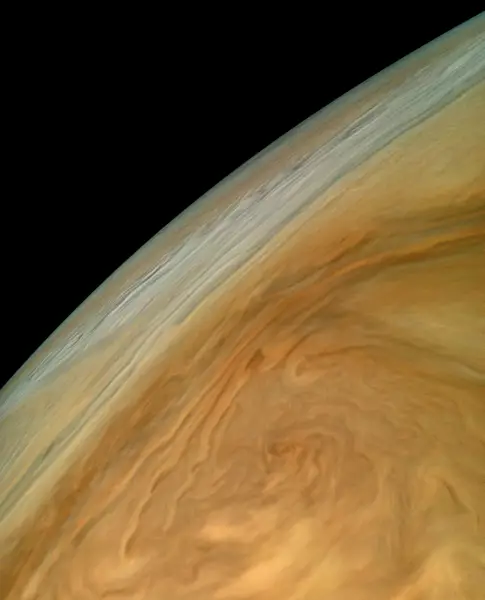
Colorful clouds over the North Equatorial Belt
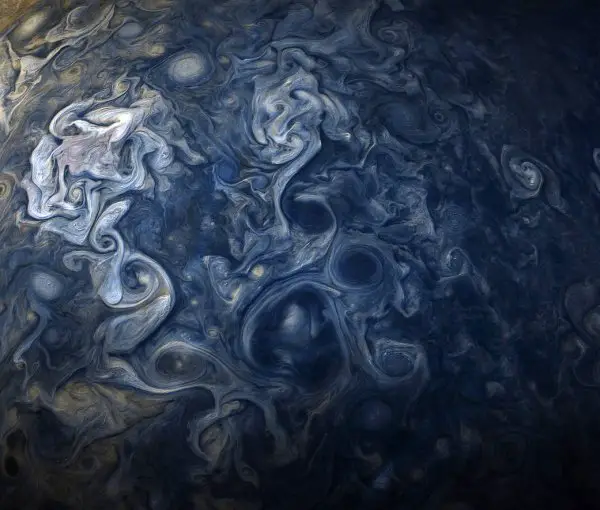
Blue Ovian clouds
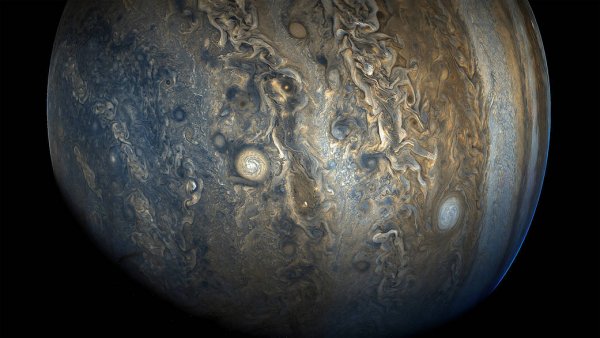
Jupiter’s southern hemisphere
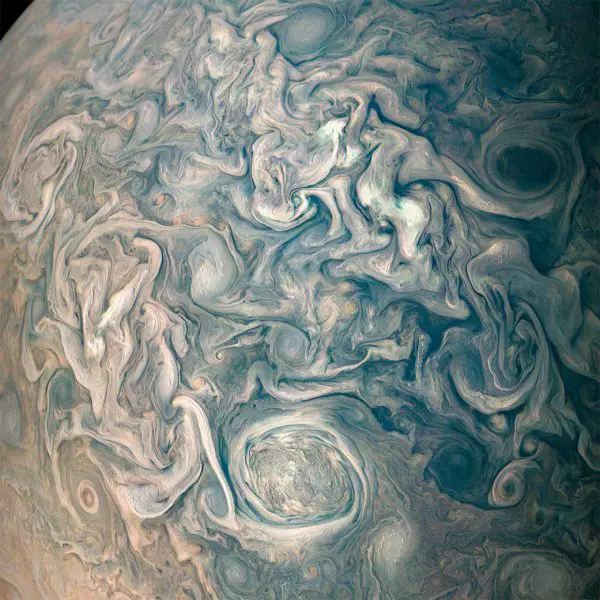
Clouds of Jupiter

Time lapse shot
Image Credit: NASA
Leave Comment: